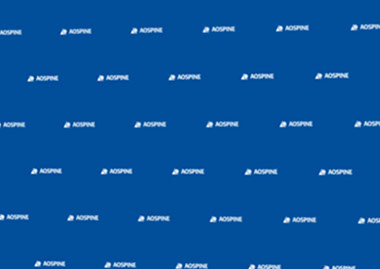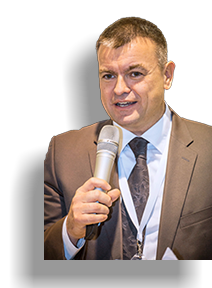

In this interview, he explains why he believes marketing and communications are important for surgeons, shares insights about the development of a new classification system for vertebral fractures, and discusses why fellowships are essential for personal development.
You are the outgoing chairperson of the Community Development Commission. Why did you apply for this position?
In the early days, community development used to be called scientific marketing. It was the marketing aspect that got me interested at the beginning. My wife had a big influence: She has an MBA and worked as a marketing manager at that time, which gave me some good insights. I found it pretty fascinating, particularly the strategy and the techniques behind it.
Many people are not aware of what community development is. How would you describe its role within AOSpine?
AOSpine's core activities are education and research. But no matter how great the educational concept or the research is, unless you have someone who communicates it and disseminates that information to the right target audience through the right “No matter how great the educational concept or the research is, unless you have someone who communicates it and disseminates that information to the right target audience through the right channels, it's pretty much worthless because almost nobody will know about it. That's where community development comes in.”channels, it's pretty much worthless because almost nobody will know about it.
That's where community development comes in: It's the facilitator of the outputs of research and education and manages marketing and communications initiatives within AOSpine, such as branding-related topics or streamlining of communication activities.
In addition, Community Development is in charge of the membership program.
People often tend to think that these are trivial activities. But I have learned that the people who think that often don't know anything about the skills needed to do this in a professional way.
When you were elected in 2015, what were your objectives and what do you consider your biggest achievements?
At the beginning in 2015, it was all about ensuring that people know what we are doing and what the purpose of community development is because it was regarded by many as something that's not necessary. My primary objective therefore was to create the awareness within AOSpine and the AO Foundation that community development is important because we can only survive as an organization if we look after our members and are in a constant dialogue with them.
We have achieved that. Today, community development activities are no longer questioned. I consider this my biggest achievement.
Of course, there are always things that can be improved. But I am very proud to say that we have come a long way and we have achieved a lot in the past three years. Some examples are the “We are now working on a classification of osteoporotic vertebral fractures in the KF Trauma. Moving forward, we also are planning on a type of continuation of the project with an injury severity scale.”reduced fee for low-income countries, the loyalty program, automatic membership renewal, and the implementation of metrics.
Member retention is also a very important topic for us. This is why we have established the ambassadors program. The program is, on one hand, a reward, a recognition for their activities and engagement and, on the other hand, it is the chance to keep them involved in the organization. There are only a few really committed people, and we realize that we need to look after them.
With around 6,500 members, AOSpine is the largest spine organization in the world. We managed to gain another 1,000 members since 2015, which is an overall increase of over 15 percent. That's substantial.
You were instrumental in establishing the member representative position in the AOSpine International Board. What was the idea behind this position?
Until 2016, there was only one way to join the international board: by working your way up through the country council, then the regional board, and then you could run for election for the international board. That classic career path takes a lot of time, around nine years, and excludes people who may be suitable for a board position but are scared away because of the politics and the long time frame.
The member representative position is different. Every member who fulfills the application criteria can run for that position. The members elect their representative democratically. Since we always have this election at the Global Spine Congress, and only attending voting members* are eligible to vote, the applicant from the region in which the congress is held is usually favored.
This is good because it ensures that it's not always the most solvent and well-known surgeons that are elected, but people who enjoy a lot of regional acceptance and who are committed to going the extra mile for the community.
This position is like a breath of fresh air as he or she does not represent a country or a commission and can articulate the needs of the members irrespective of regional or other interests.
This is one of the main differences between AOSpine and other organizations: AOSpine is a democratic organization.


 Global Spine Journal Best Paper Award for The Thoracolumbar AOSpine Injury Score (from left to right): Karsten Wiechert (Global Spine Journal Editor-in-Chief) Gregory Schroeder, Klaus Schnake, Cumhur Oner, Jeffrey Wang (Global Spine Journal Editor-in-Chief), Frank Kandziora, Jens Chapman, Carlo BellabarbaWith the newly elected Member Representative Massimo Balsano at the Global Spine Congress in Milan 2017 (from left to right): Jeffrey Wang, C.C. Wong, Massimo Balsano, Klaus Schnake, Dan Riew 1 - 3<>
Global Spine Journal Best Paper Award for The Thoracolumbar AOSpine Injury Score (from left to right): Karsten Wiechert (Global Spine Journal Editor-in-Chief) Gregory Schroeder, Klaus Schnake, Cumhur Oner, Jeffrey Wang (Global Spine Journal Editor-in-Chief), Frank Kandziora, Jens Chapman, Carlo BellabarbaWith the newly elected Member Representative Massimo Balsano at the Global Spine Congress in Milan 2017 (from left to right): Jeffrey Wang, C.C. Wong, Massimo Balsano, Klaus Schnake, Dan Riew 1 - 3<>
Besides chairing the AOSpine Community Development Commission, you are also very active in the AOSpine Knowledge Forum (KF) Trauma. Can you tell us a bit more about that?
My activities there are mostly related to my personal history. I matured in classical surgery and traumatology. My current spectrum also very much includes degenerative spine surgery and deformities. When it comes to my everyday work, my range is very “With around 6,500 members, AOSpine is the largest spine organization in the world. We managed to gain another 1,000 members since 2015, which is an overall increase of over 15 percent. That's substantial.”broad. However, my passion is spinal traumatology; that's where I have most of my experience and where I am strongly committed politically and scientifically in Germany. I was recommended to the AOSpine Knowledge Forum (KF) Trauma and acted from 2013 to 2015 as an associate. In 2015, I became an AOSpine KF Trauma Steering Committee member. We are now working on a classification of osteoporotic vertebral fractures in the KF. Moving forward, we also are planning on a type of continuation of the project with an injury severity scale.
We are taking clinical and radiological aspects to decide how the patient will be treated. Once this is done, we'll work on a treatment recommendation. I'm responsible for this project because it is based on the related working group that I have led in Germany since 2012. I'm excited and proud to create an internationally valid classification and a treatment recommendation.
What advice do you have for young surgeons who are starting their careers?
I recommend doing a fellowship or even just short internships. In other words, do not only learn at your clinic but also take advantage of every opportunity outside your "home base" to develop further.
You learn so much from watching others, by discussing with peers and obtaining advice. It's a quantum leap in your individual development when you get to do that. The AOSpine membership offers great opportunities for that, even independent of the fellowship programs. Most of the surgeons do not mind if someone drops by for a short period of time. With the global network and contacts, it's fairly easy to do it, if you can afford it financially.
I also see a big opportunity in what the AOSpine Education Commission is currently establishing: hospital-based courses. So, instead of organizing a course that everybody needs to travel to and spend a lot of money, they go where the people are. I find that a positive development and see it as a great chance to improve your professional education and to network even with a smaller budget.
How did AOSpine support you personally or help you in your career development?
They gave me the chance to commit myself, to pass on my knowledge in spinal trauma as a faculty member and in the AOSpine KF Trauma. All of us who are involved with AOSpine share a joint interest and passion to improve spine care.
Thanks to my engagement, I have met so many people from all over the world and I have learned so much from them. I am very grateful for this. I am still fascinated to see how colleagues in other “Every member who fulfills the application criteria can run for the Member Representative position. The members elect their representative democratically. This is one of the main differences between AOSpine and other organizations: AOSpine is a democratic organization.”regions treat patients, the daily challenges they face and how they master the situation.
Here in Germany, we have a strong and stable spine community with a long tradition and we believe that what we are doing is fundamentally right. Sometimes, because of that, I believe that we are no longer open to other or new ideas. It's something that we must always keep in mind: staying open and knowing our own biases. Allow yourself to be open to other opinions and accept that things can be done differently. Seeing things from different points of view has contributed a lot to my personal development.
What do you recognize as the most valuable experience during your term as the AOSpine Community Development Commission Chairperson?
Being heavily engaged at the AO is time consuming, but when you are together with a group of people for several days and you discuss things very intensively, that also creates very strong bonds. A lot of personal friendships have developed over time, which otherwise I would never have had. That's what makes the AO special to me and I am very thankful for this.
I would also like to take the opportunity to thank the AOSpine Community Development team and my colleagues in the regions. I had the opportunity to work with a group of extremely professional and fascinating people and it was a very pleasant experience for me to lead this commission. I was backed up by a team that really got into it and took their jobs seriously. It's not always like that and it was a real highlight for me.
*AOSpine members that have been members for at least three consecutive years and who are present at the Global Spine Congress.
Klaus Schnake—
growing the worldwide spine community

Newsletter 17 | July 2018